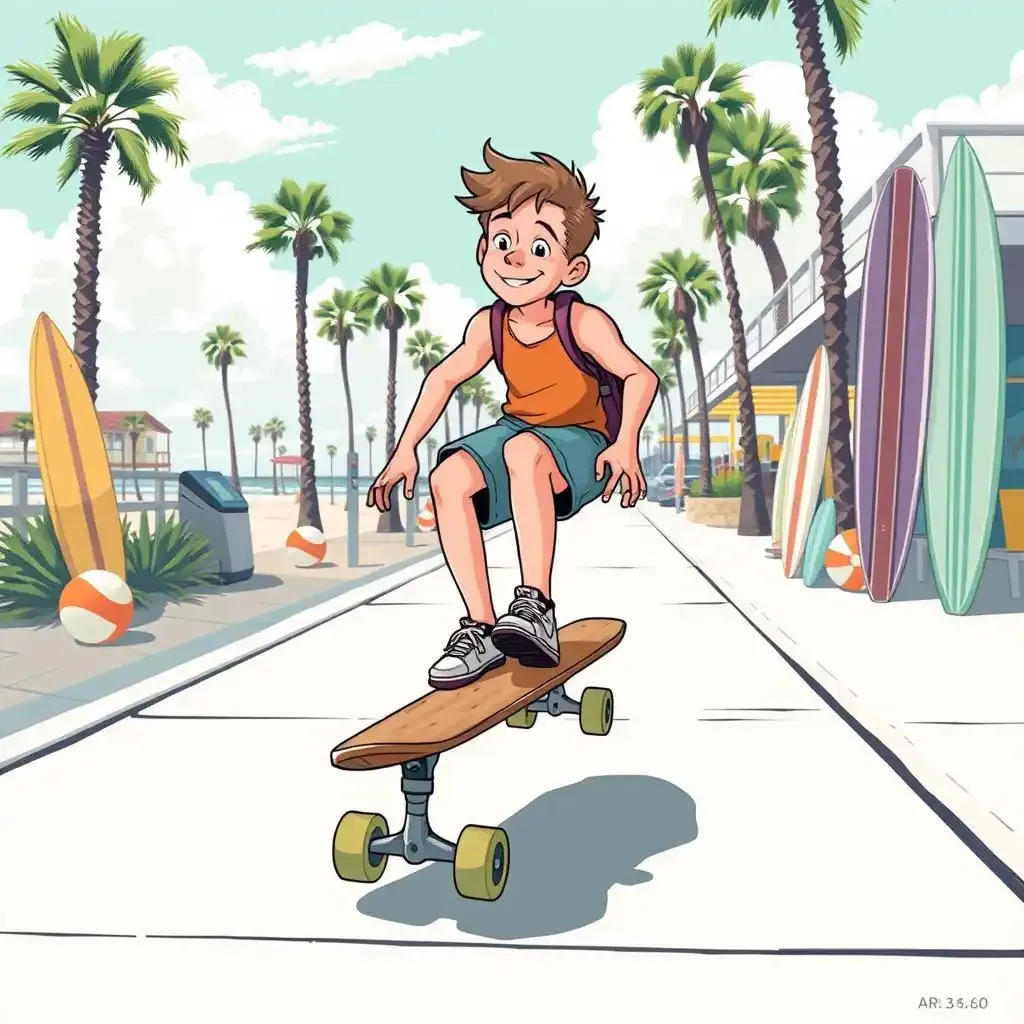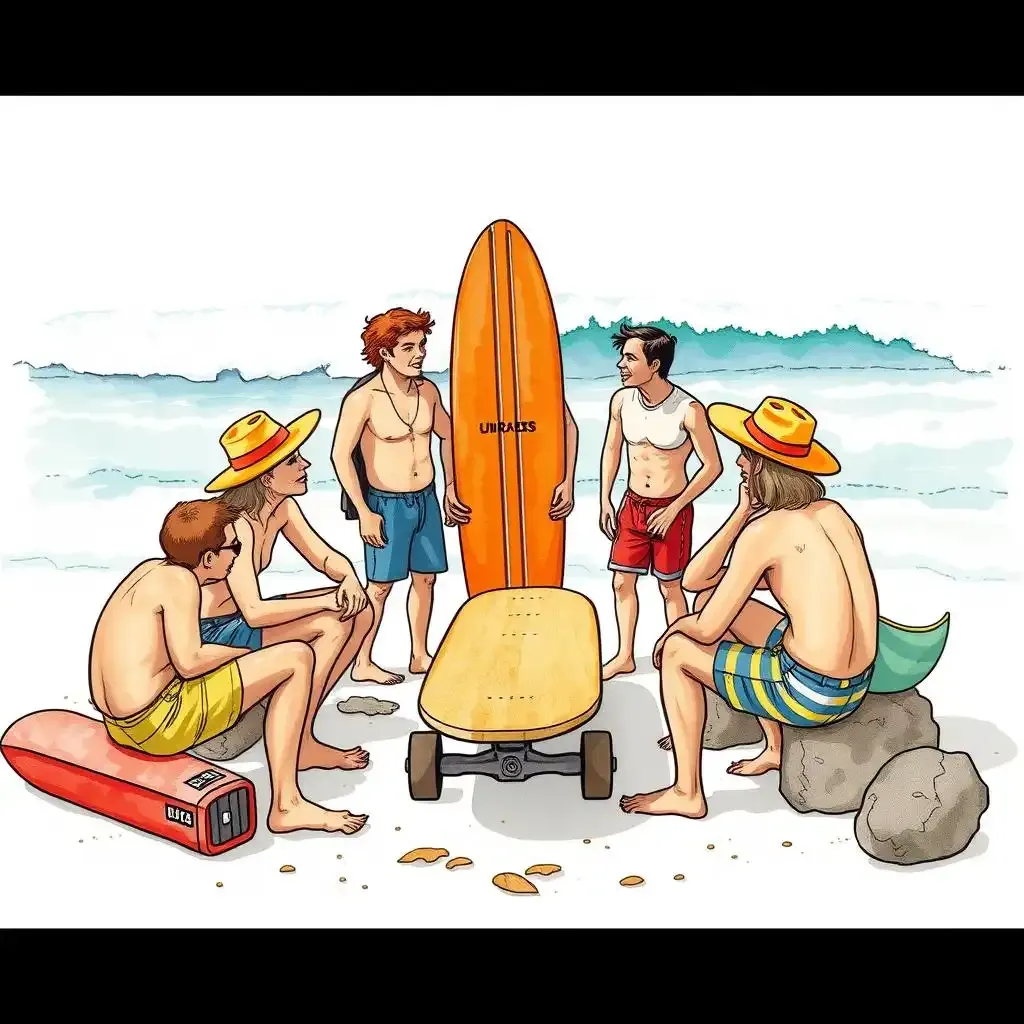Table of Contents
Have you ever felt the wind rush through your hair as you rolled down the street on a skateboard? It's a super fun way to get around and do cool tricks! But when was the skateboard invented? It might surprise you to learn that the idea of a skateboard has been around longer than you think. While the 1950s are often called the time when the skateboard really took off, some people were riding wooden boards with wheels way before that! Let's explore the story of when the skateboard invented, from its simple beginnings to the awesome sport we know today.
Key Point | Details |
|---|---|
General Invention Period | Often cited as the 1950s. |
Early Examples | Reports of wheeled boards as far back as the 1640s and 1930s-1940s. |
Early Designs | Similar to scooters without handlebars. |
Surfer Influence | Surfers in Southern California wanted to "surf" on land. |
Early Commercial Boards | Alf Jensen's "Bun Board" in 1957. |
The "Ollie" | Invented in 1976 by Alan "Ollie" Gelfand, revolutionized the sport. |
Early Days: When Was Skateboard Invented and Its Humble Beginnings
Early Days When Was Skateboard Invented And Its Humble Beginnings
The "Aha!" Moment (or Maybe Not Just One)
Okay, so you're wondering when the skateboard was invented? It's not like someone shouted "Eureka!" while holding a plank with wheels. Instead, it was more of a gradual thing, like how a caterpillar slowly becomes a butterfly. We're talking way back in the 1950s, which might sound like ancient history, but trust me, it's where the skateboard story really starts to get interesting. Imagine a time when things weren't as readily available as they are now. If you wanted something cool, sometimes you just had to build it yourself. That's kind of how the first skateboards came about. People started tinkering, trying to find a way to have some fun on wheels.
From Scooter Parts to Sidewalk Surfing
Think of those old-school scooters, the ones without all the fancy folding mechanisms. Well, early skateboard inventors looked at those and thought, "Hmm, what if we took off the handle and the front part?" That's basically what the first skateboards were! They were super simple: just a wooden board with some wheels attached. Now, where did those wheels come from? Often, they were roller skate wheels! It's like taking LEGOs from one set and using them to build something completely different. Down in sunny Southern California, where the waves are awesome, surfers had a problem. What do you do when the ocean is flat and there are no waves to ride? You find the next best thing, which turned out to be "sidewalk surfing." Want to know if skateboarding came from surfing? Explore the relationship!
The Bun Board Rolls In
Now, while lots of folks were probably messing around with homemade boards, there's a name that pops up when we talk about early commercial skateboards: Alf Jensen. This dude in Hermosa Beach, California, started selling his own skateboards in 1957. He called them "Bun Boards," which sounds kind of funny, like you're going to ride a sandwich. These boards had steel wheels, which probably made for a pretty bumpy ride! But hey, it was a start. It was like the first version of a video game console – not as sleek as what we have now, but revolutionary for its time. These early boards weren't about doing kickflips or grinding rails; they were about cruising around and having a blast. Just imagine the feeling of rolling down the street on something you or someone else created. Speaking of having a blast, are skateboards dangerous? It's worth thinking about the risks involved.
The Surfing Link: How Surfers Influenced When Skateboards Were Invented
The Surfing Link How Surfers Influenced When Skateboards Were Invented
Catching Waves on Concrete
You know how when you love something, you want to do it all the time? That's how surfers in California felt about riding waves. Imagine the feeling of gliding across the water, the sun on your face – it's pure joy! But the ocean doesn't always cooperate. Sometimes the water is as flat as a pancake, and those surfers were left wanting. They had this craving, this need to feel that same rush, even without the waves. So, they started thinking, "How can we bring that feeling to the land?" It's like when you love drawing so much you start doodling on everything, even your homework (don't tell your teacher I said that!). These surfers needed their "land waves," and that's where the idea of the skateboard really started to take shape.
Flat Days, Bright Ideas
Think about it: California in the 1950s was the place to be if you loved surfing. But even in sunny California, the surf wasn't always up. Those days with no waves? Total bummer for a surfer. But instead of just sitting around, these inventive folks started messing around. They grabbed wooden boards – anything they could find, really – and attached roller skate wheels to them. Seriously, it was that simple! It wasn't some big, planned invention; it was more like a cool experiment born out of boredom and a love for riding. This desire to surf on land is a big part of why skateboarding exists. Want to know more about where skateboarding came from?
From Water to Wheels
So, think about this: a surfer, used to balancing on a board while the ocean moves beneath them, now trying to balance on a similar board while the ground stays still. They already had the stance, the feel for leaning and turning. It was like they were just transferring their skills from the water to the sidewalk. They even called it "sidewalk surfing"! They were using the same motions they used on their surfboards, pretending the streets were their waves. It’s like when you play pretend as a kid – you use what you have to create the world you want. As one early skateboarder probably said, "No waves? No problem! We'll make our own!"
The Ollie and Beyond: The Evolution of When the Skateboard Was Invented
Kickflipping into the Future
Okay, so those early skateboards were pretty basic, like a slice of bread compared to a triple-decker sandwich. You could roll around, maybe go down a hill, but that was about it. Then came the awesome part: people started figuring out how to do tricks! It's like when you learn to ride a bike, and then you try popping a wheelie for the first time – mind blown! The biggest game-changer? This thing called the "ollie." Imagine being able to jump your skateboard without using your hands! That's what the ollie let skaters do. Alan "Ollie" Gelfand figured this out in 1976, and it was like unlocking a secret level in a video game. Suddenly, you could hop over stuff, jump onto things, and the whole world became a skatepark. It totally transformed what skateboarding could be. Ever wondered if skateboards are vehicles? It's a question I get asked a lot.
From Flat Ground to Flying High
The ollie wasn't just one cool trick; it was the key to a million other tricks. Think of it like learning the alphabet – once you know your ABCs, you can start writing words and sentences. Before the ollie, skaters were mostly stuck on the ground. Afterward, the sky was the limit! People started doing kickflips, where the board spins in the air, and heelflips, which are kind of the opposite. Then came grinds, where you slide along edges, like a train on its tracks. Skateparks started popping up with ramps and rails, giving skaters even more places to try out these new moves. It was like the skateboard itself was growing, growing wings to fly. And just like learning any new skill, there's always the question: are skateboards dangerous? It's something to keep in mind.
The Modern Skateboarding Explosion
Today, skateboarding is a wild mix of all those early ideas and the tricks that came later. We've got different kinds of skateboards for different styles of riding, like longboards for cruising and smaller boards for doing technical tricks. The wheels are way better now, too – smoother and grippier. It's come a long way from those bumpy steel wheels on the Bun Board! Skateboarding is even in the Olympics now! Can you believe it? From messing around on simple wooden boards to competing for gold medals – that's quite a trip. As legendary skater Tony Hawk once said, "I wouldn't be who I am today without skateboarding." It just goes to show you how much something can change and grow over time, from a simple idea to a global phenomenon.
Rolling into the Future
So, while pinning down the exact moment when the skateboard invented is tricky, the 1950s mark the start of its modern process. From simple wooden planks with wheels to the high-tech boards of today, skateboarding has come a long way. It's a testament to the creativity of people who just wanted to have fun, whether they were riding waves or concrete.